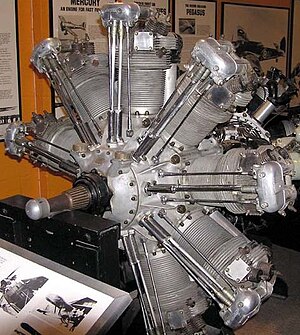Bristol Jupiter IV
| Jupiter | |
|---|---|
 |
|
| Preserved Bristol Jupiter | |
| Type | Piston aircraft engine |
| Manufacturer | Bristol Aeroplane Company |
| Designed by | Roy Fedden |
| First run | 29 October 1918 |
| Major applications |
Bristol Bulldog Gloster Gamecock |
| Number built | >7,100 |
| Developed into | Bristol Mercury |
The Bristol Jupiter was a British nine-cylinder single-row piston radial engine built by the Bristol Aeroplane Company. Originally designed late in World War I and known as the Cosmos Jupiter, a lengthy series of upgrades and developments turned it into one of the finest engines of its era.
The Jupiter was widely used on many aircraft designs during the 1920s and 1930s. Thousands of Jupiters of all versions were produced, both by Bristol and abroad under licence.
A turbo-supercharged version of the Jupiter known as the Orion suffered development problems and only a small number were produced. The "Orion" name was later re-used by Bristol for an unrelated turboprop engine.
The Jupiter was designed during World War I by Roy Fedden of Cosmos Engineering. During the rapid downscaling of military spending after the war, Cosmos became bankrupt in 1920, and was eventually purchased by the Bristol Aeroplane Company on the strengths of the Jupiter design and the encouragement of the Air Ministry. The engine matured into one of the most reliable on the market. It was the first air-cooled engine to pass the Air Ministry full-throttle test, the first to be equipped with automatic boost control, and the first to be fitted to airliners.
The Jupiter was fairly standard in design, but featured four valves per cylinder, which was uncommon at the time. The cylinders were machined from steel forgings, and the cast cylinder heads were later replaced with aluminium alloy following studies by the RAE. In 1927, a change was made to move to a forged head design due to the rejection rate of the castings. The Jupiter VII introduced a mechanically driven supercharger to the design, and the Jupiter VIII was the first to be fitted with reduction gears.
...
Wikipedia
